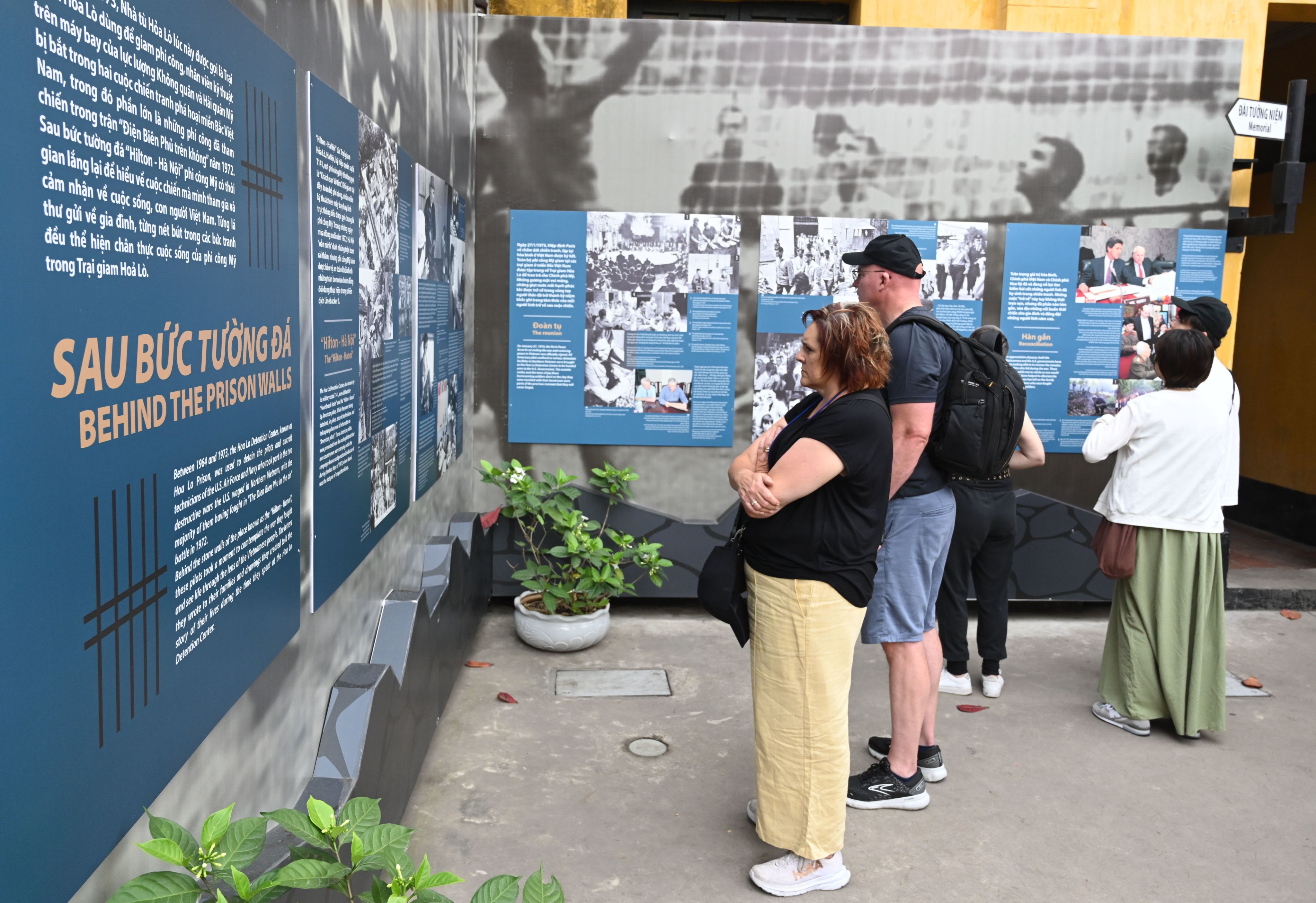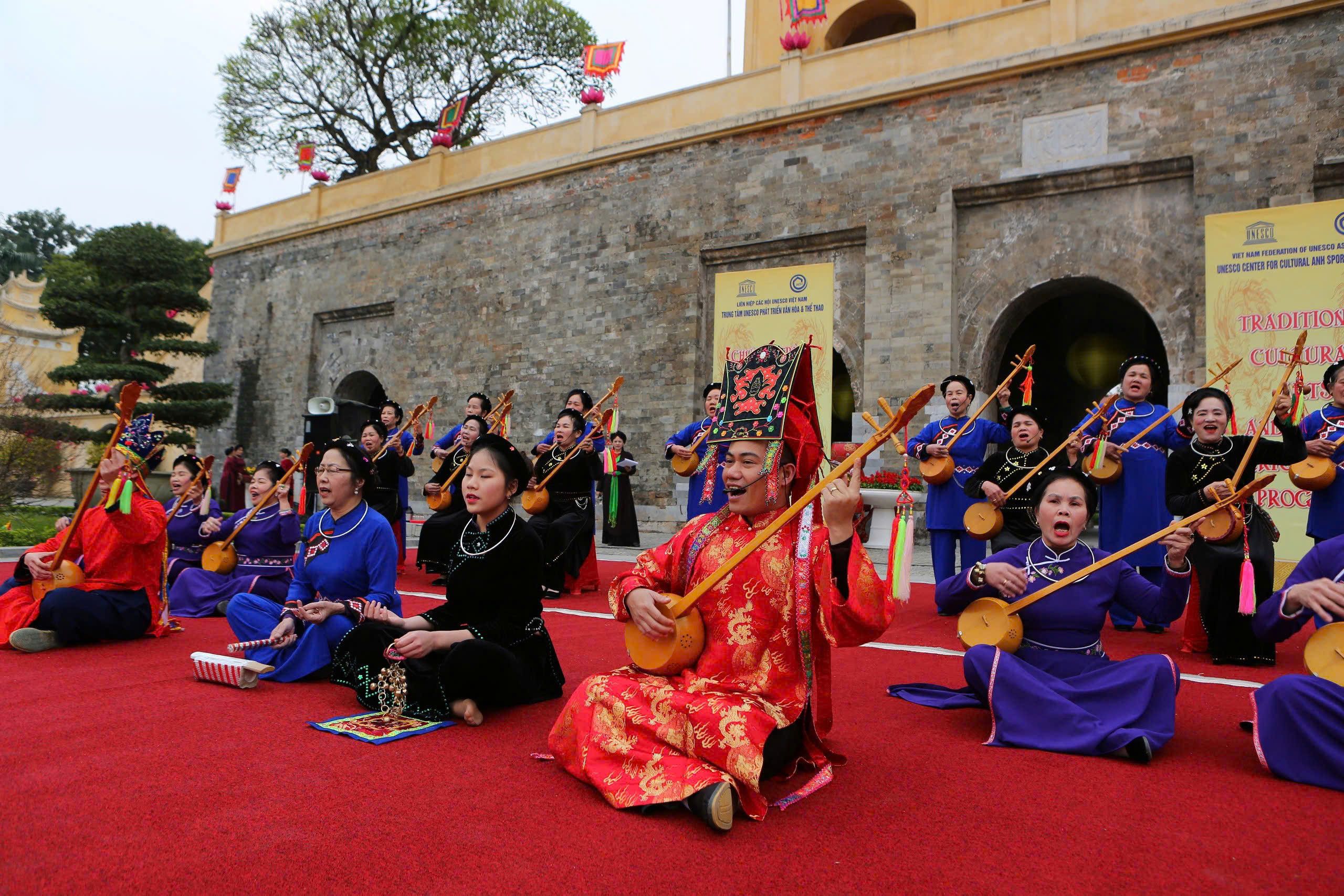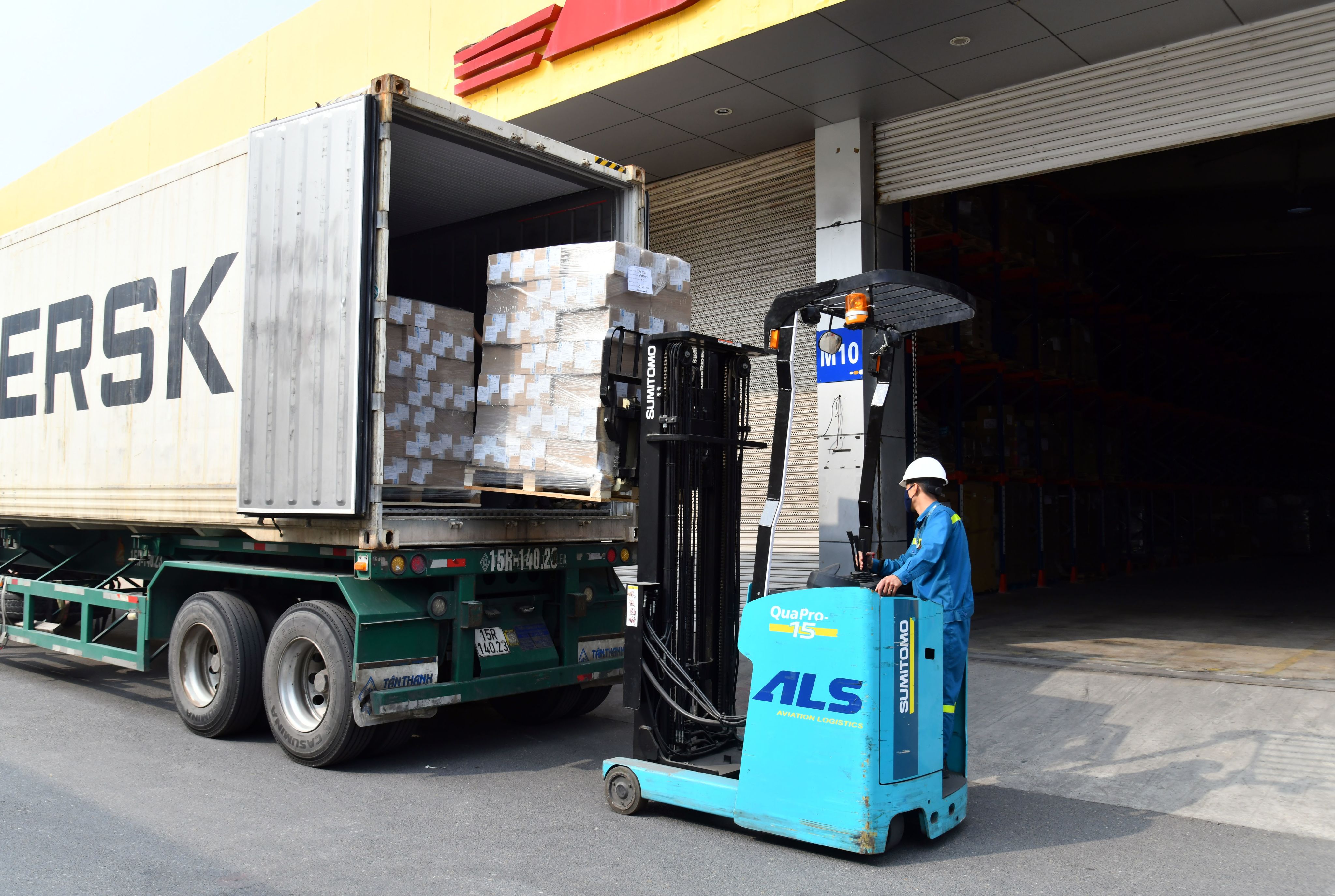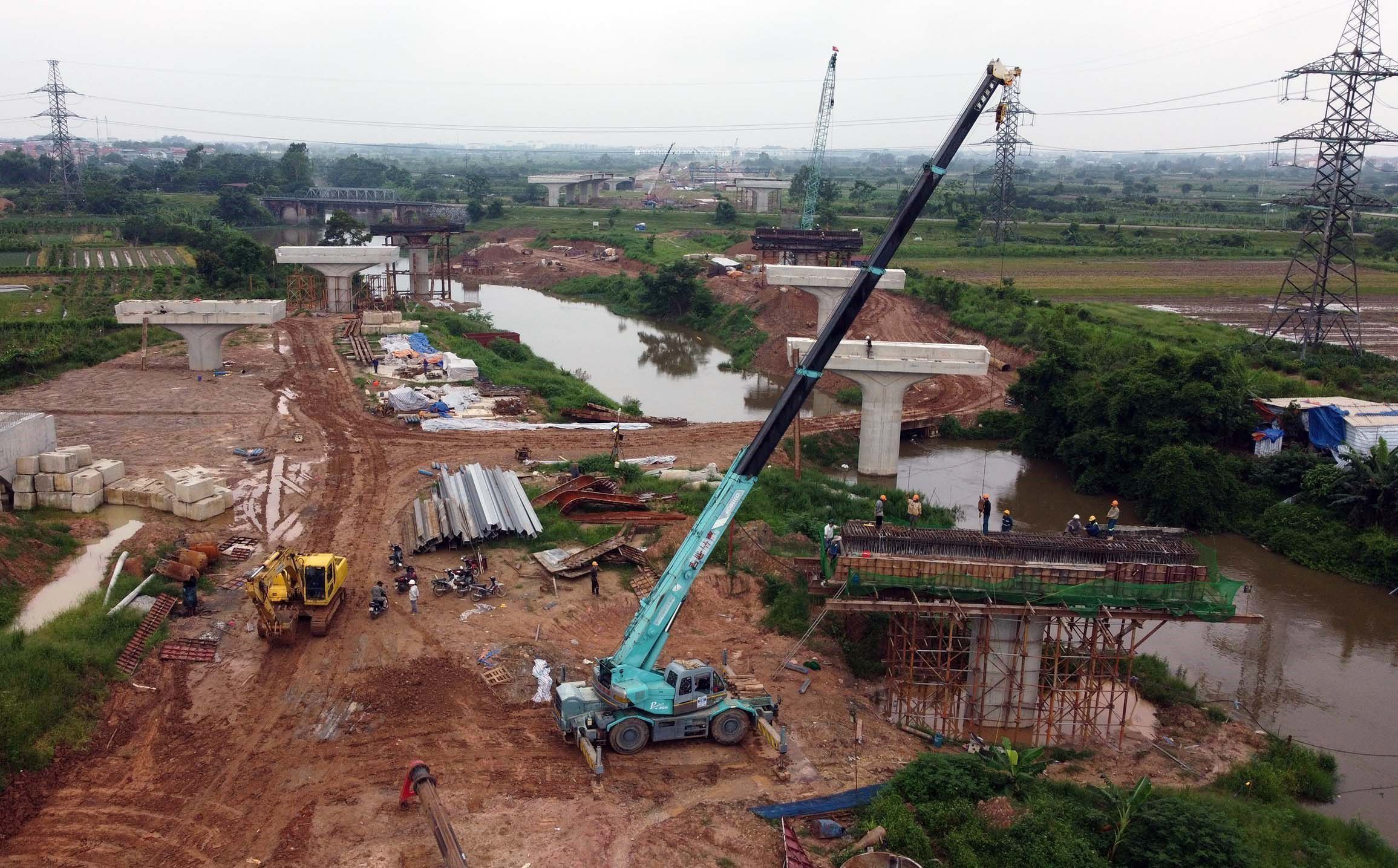Hanoi

Hanoi is not only the heart of the nation but also the central core and engine powering the socio-economic development of the Capital Region, the Red River Delta Region and the Northern Key Economic Region. The Law on Capital City (amended in 2024) reaffirms Hanoi’s unique role and position.
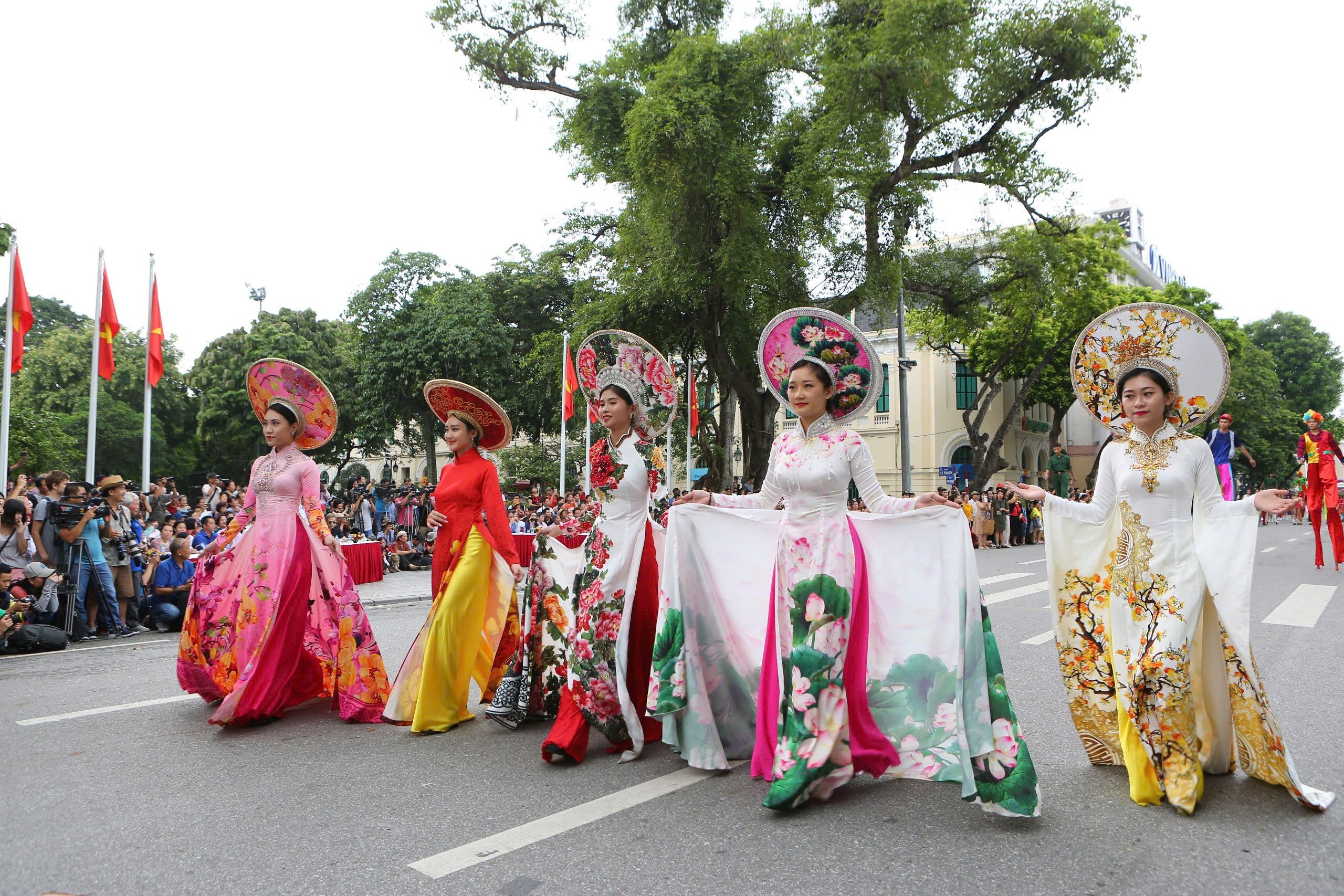
Leading and spreading
With a population of 8.5 million people with increasing income, Hanoi is a large market in the region and the country. It is the centre of commerce, linking the supply and demand for goods between provinces and cities in the region. Hanoi’s total retail sales and service revenue accounts for over 44% of the Red River Delta and 12.8% of the country.
After the COVID-19 pandemic, Hanoi’s economy has recovered and grown in the past three years. The city’s economic growth reached 6.27% in 2023, averaged 6.04% during 2021-2023, and reached 6% in the first half of 2024. Although Hanoi’s growth is lower than the five-year target of 7.5-8%, it is 1.16 times higher than the national average.
Hanoi’s total social development investment capital reached 1.36 quadrillion VND (53.57 billion USD) during 2021-2023. Labour productivity increased by 4.8% on average. GDP per capita in 2023 reached 151.1 million VND (5,945 USD), 1.48 times higher than the national average and up 1.22 times compared to 2020.
Hanoi contributes 12.7% to Vietnam’s GDP and 23.4% to the country’s total government revenue.
Although only accounting for 1% of the country’s land area and 8.5% of its population, Hanoi contributes up to 12.7% of Vietnam’s GDP and 23.4% of its total government revenue.
These figures demonstrate Hanoi’s successful role in leading and spreading the socio-economic development momentum.
Hanoi is also rich in cultural and historical heritage with 5,922 relic sites, 1,793 intangible cultural heritages, including several recognised by UNESCO, 1,350 trade villages and 1,700 folk festivals.
The total number of tourists to Hanoi in 2023 reached 24.72 million, an increase of 30.93%. The figure includes 4.72 million international visitors (2.82 million staying visitors), an increase of 180.95%.
In the first six months of 2024, the total number of tourists reached 14.05 million, an increase of 13.7%, including 3.14 million international visitors, an increase of 52.6%. Hanoi coordinated about 40% of visitors from the capital to travel to the northern provinces and cities.
Domestic and foreign tourists visit the Hoa Lo Prison Historical Site. Photo: Dang Anh
Domestic and foreign tourists visit the Hoa Lo Prison Historical Site. Photo: Dang Anh
The capital is also a place where high-quality human resources from all over the country converge. This is where more than 80% of universities, colleges, and research institutes; 82% of national key laboratories; about 65% of the total number of professors, doctors, and scientists in the country are located.
With its position, role, and orientation to exploit and make the most of all available resources, Hanoi always attaches importance to economic development in parallel with culture and society. The city is determined to develop the capital worthy of its thousand-year-old cultural tradition, truly a centre of convergence, crystallisation, and diffusion of the country's culture; effectively exploiting resources: human; cultural heritage resources; cultural institutions; cultural institutions; position; and opportunities.
To materialise the guiding ideology of the late General Secretary Nguyen Phu Trong at the 2021 National Cultural Conference - in which he stated “Culture is truly the foundation of society, an endogenous strength, and a crucial driving force for socio-economic development and international integration, placing culture on par with the economy and other key sectors of the country” - Hanoi has issued a plan on renovating national-standard public schools, upgrading the health system, and restoring and embellishing relics in the 2022-2025 period and following years, with a total investment of nearly 50 trillion VND.
Hanoi has issued and implemented a resolution on the development of cultural industries with the goal of creating a comprehensive development step for the capital's cultural industries, promoting cultural values, and ensuring harmonious connection with socio-economic development.
An art performance at the Thang Long Imperial Citadel. Photo: Thanh Dat
An art performance at the Thang Long Imperial Citadel. Photo: Thanh Dat
The city is gradually fulfilling its commitment to participate in UNESCO's Creative Cities Network. In 2021, Hanoi organised the Creative Space Design Competition and the Creative Inspiration Week. In 2022, the city hosted the Creative Design Festival with the theme “Technology - Design”. Highlights included three competitions focused on architecture, technology, and creativity; seven special art shows; twelve creative art exhibitions and installation spaces; nine interactive art experiences featuring VR technology; ten forums, conferences, and in-depth seminars; more than 20 creative cultural game experiences; and over 50 creative spaces for traditional and international cultural products.
Hanoi has consistently led the country in key criteria, including educational scale, school network, the quality of specialised education, and the number of students achieving high results in national and international student competitions.
Hanoi has also actively supported innovative startups, digital transformation, and the application of science and technology in production and business. From 2021 to 2022, the city allocated over 35 billion VND to support these activities. To date, 60 innovative investment funds have been established.
Hanoi has a unique advantage in trade exchanges and cultural exchanges with provinces and cities both in the region and nationwide, serving as a crucial transportation hub for air, rail, and road transport in the region and across the country. Additionally, Hanoi is situated within two economic corridors connecting it to five provinces and cities with Yunnan and Nanning (China); it has Noi Bai International Airport located 40 kilometres from the centre, and Hai Phong and Cai Lan ports, which are two container ports facilitating the exports and imports of goods, is only 120 kilometres away from Hanoi.
Hanoi is completing its transportation infrastructure and is urgently collaborating with localities in the Capital Region to construct Ring Road 4 - Capital Region, aiming for completion before 2027 and investing in the construction of Ring Road 5 before 2030.
With a population of 8.5 million people with increasing income, Hanoi is a large market in the region and the country. It is the centre of commerce, linking the supply and demand for goods between provinces and cities in the region. Hanoi’s total retail sales and service revenue accounts for over 44% of the Red River Delta and 12.8% of the country.
Six key tasks
On May 5, 2022, the Politburo issued Resolution No. 15-NQ/TW on the orientations and tasks for developing Hanoi Capital until 2030, with a vision to 2045. On June 28, 2024, the National Assembly issued the amended Law on the Capital, which continued to affirm that Hanoi is the centre, the driving force for promoting linkage and development, the growth pole able to lead and promote the development in the Red River Delta, the Northern economic region, and the whole country.
Hanoi City’s authorities have submitted to the Prime Minister the ‘Hanoi Capital’s General Planning for the period 2021-2030, with a vision to 2050’ and the project on adjusting the general planning of Hanoi until 2045, with a vision to 2065.
Based on these important orientations, Hanoi will focus on six key tasks.
First, develop the capital's economy rapidly and sustainably, focusing on promoting economic restructuring; mobilising and effectively using available resources; innovating the growth model; placing science, high technology and innovation as key driving forces for socio-economic development; accelerating digital transformation; developing digital economy and digital society; fostering sustainable development of finance, currency, securities, real estate, and science and technology markets.
Priorities are attached to developing high-tech industrial production and services with high added value; turning cultural industry and tourism into spearhead economic sectors, especially cultural tourism; restructuring and improving the efficiency of agricultural production; and developing ecological and high-tech agriculture.
The city also targets to promote the leading and motivating role of public investment while encouraging financial sources from the private sector, foreign investors, donors and international organisations; mobilising and effectively using resources from land and other resources; and developing infrastructure systems and planning for socio-economic development.
Cargo loading and unloading at ICD My Dinh port. Photo: Dang Anh
Cargo loading and unloading at ICD My Dinh port. Photo: Dang Anh
Second, the city has strongly developed its cultural career and built elegant and civilised Hanoians, worthy of being a major centre of education and training, science and technology, and healthcare; ensuring social security and welfare, improving the quality of life of the people of the capital; improving the quality of comprehensive education and training; strongly developing the science and technology market; encouraging and supporting businesses to participate in technological innovation activities, and building a creative startup ecosystem.
The city has focused on building an advanced and modern healthcare system, developing a number of areas to approach world-class technology: improving the quality of medical examination and treatment as well as the capacity of the preventive healthcare system, grassroots healthcare, and family doctor system to ensure comprehensive health care for the people; developing a comprehensive social security system that covers all people; expanding the beneficiaries of policies; and creating conditions for people to have maximum access to essential social services.
Third, more attention has also been paid to improving the quality of planning and strictly managing planning; promoting the construction of synchronous infrastructure; developing and managing urban areas; exploiting and utilising resources effectively while protecting the environment; studying to increase the proportion of urban development land; building a model of a city directly under the capital; focusing on implementing planning, investing in construction, and stabilising the population on both sides of the Red River and Duong River; and planning to develop underground urban spaces, green spaces, and public spaces.
The city has focused on investing in developing and upgrading the economic-social infrastructure system in a comprehensive, synchronous, modern, and effective manner. It focused on allocating and prioritising capital from the state budget in a reasonable manner, combined with promoting the mobilisation of social resources for infrastructure projects, especially in the form of public-private partnerships (PPP), associated with promoting decentralisation of power to the capital.
Construction of a railway overpass in package No.8 of Ring Road 4 - Capital Region in Me Linh District. Photo: Huy Hung
Construction of a railway overpass in package No.8 of Ring Road 4 - Capital Region in Me Linh District. Photo: Huy Hung
The key initiatives highlighted include accelerating the progress of urban railway projects and the construction of bridges over the Red River and the Duong River. The goal is to complete the Belt Road 4 before 2027 and to prepare for the investment and construction of Belt Road 5 before 2030. Additionally, there are plans to expand and upgrade Noi Bai International Airport and to study the possibility of building another international airport. Efforts will also focus on forming new growth centres and gradually creating a cluster of urban areas, satellite towns, and urban development models oriented toward transportation (Transit-Oriented Development - TOD). This will be accompanied by strict management of high-rise housing development and population growth in the central urban area. Specific mechanisms and policies will be developed to rebuild old apartment complexes and to relocate industrial facilities which cause environmental pollution, as well as educational institutions and hospitals, according to urban planning guidelines. Priority will be given to using the land freed up from these relocations for public works and social welfare projects.
The fourth task is to ensure defence, security, social order and safety in the capital under all circumstances. It aims to guarantee absolute safety for key objectives and important events, creating a peaceful, stable, secure, and safe environment for the development of both the capital and the country.
The fifth task is to promote international relations, integration, development cooperation to raise the position and prestige of the capital. This includes actively seizing opportunities from new-generation trade agreements and strengthening traditional relationships while expanding cooperation with capitals and cities worldwide. The aim is to increase people-to-people diplomacy and promote Hanoi’s image to international friends and overseas Vietnamese.
The sixth task is to further refine the legal system related to the capital, with appropriate mechanisms and policies to meet the development needs of Hanoi in the new phase. This includes reviewing, supplementing, and amending the Capital Law and developing a legal framework with special policies that offer significant advantages for the capital.
Published: October 2024
Production manager: Kieu Huong, Truong Son
Content: Le Trung Hieu
Photos: Thanh Dat, Duy Linh
Design: Hoai Anh

